Note: This article was originally written in 2019, and has been recently updated to reflect current events and trends. Any updated information within the article was done by our fact-checker, Fawn.
Green Berets and Army Rangers are considered some of the toughest special operations forces in the US Armed Forces, if not the world.
However, there are some notable differences between Green Berets and Army Rangers that most people don’t realize.
While both of these units are highly elite in their own right, the amount of specialized training it takes to be a Ranger is less than what it takes to be a Green Beret.
The purpose of this article isn’t to determine which one is better, who has the harder training or selection program, or who would win in a fist fight.
Rather, it’s to outline and compare the major differences between the overall roles, selection process, and history of the Green Berets Vs. Army Rangers.
Related Article – Delta Force Vs. Navy SEALs
Here’s a quick snapshot of some of the differences:
Quick Green Berets Vs. Army Rangers Comparison Chart
| Green Berets | Army Rangers | |
|---|---|---|
| Summary | Green Berets are the US Army unconventional warfare apparatus, involved in Combat Search and Rescue, Psychological, and Peacekeeping missions. | Army Rangers are an elite light infantry unit tasked with missions like direct action raids, airfield seizure, reconnaissance, and personnel recovery. |
| Founded | June 19, 1952 | 1775 |
| Motto | To Liberate The Oppressed | Rangers Lead the Way |
| Average Age | 31 | 24 |
| Logo / Insignia | 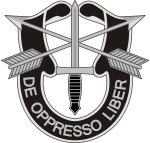 | 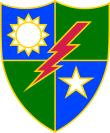 |
| Commanded By | U.S. Army Special Forces Command (Airborne) | 75th Ranger Regiment |
| Total Size | Around 6,600 | Around 3,600 |
| Primary Role | - Unconventional Warfare - Counter-Terrorism - Direct Action - Special Reconnaissance - Foreign Internal Defense | - Direct Action - Special Reconnaissance |
| Requirements | - A US Citizen - Age 20 - 32 - High School Graduate - Airborne qualified or volunteer for Airborne - Physical Fitness Assessment; Min. 63 push-ups, 68 sit-ups, 6 pull-ups, 2 mile run in a min. of 13:42 - Eligible for a security clearance - 50 meter swim in full gear - 20/20 vision (correctable allowed) in both eyes, both near and distant vision. - 1 yr. of college preferred | - US Citizen - Physical Fitness Assessment; Min. 53 push-ups, 63 sit-ups, 4 pull-ups, 2 mile run in a min. of 14:30, 6-mile march in full gear in less than 1 hour, 30 minutes. - Qualify / volunteer for Airborne training - In good moral character - Eligible for a security clearance |
| Training And Selection | - Special Forces Preparation and Conditioning (SFPC) - Special Forces Assessment And Selection (SFAS) Phase 1: MOS Training (Special Forces Detachment officer, Weapons Sergeant, Engineer Sergeant, Medical Sergeant, or Communications Sergeant) and SERE Phase 2: Small Unit Tactics Phase 3: Robin Sage Phase 4: Graduation Phase 5: Language and Culture Phase 6: Military Free Fall Parachutist Course | - Ranger Assessment And Selection Program (aka RASP), which includes: RASP 1: 8 week course broken down into 3 phases. RASP 2: 21-day course that tests the mental and physical capabilities of the applicant. - Continued Training (contingent upon MOS): Sniper training SCUBA SERE Jumpmaster |
| Primary Weapons | - Assault Rifles / Machine Guns M4A1 MK 16 SCAR-L MK 46 M240 M2 - Handguns M9 Beretta - Sniper Rifles MK 12 Mod 0 M24 SWS M107 | - Assault Rifles / Machine Guns M4A1 MK 17 SCAR-H MK 46 Mk 48 M240 M2 - Handguns M9 Beretta Glock 19 - Sniper Rifles MK 12 MOD 1 SPR MK11 Mod 0 M24 SWS |
| ASVAB Requirements | General Technical: 110 | General Technical: 105 |
| Are Women Allowed? | Yes | Yes |
| Notable Engagements / Operations | - Korean War - Cold War - Vietnam War - Operation Urgent Fury - Operation Just Cause - Gulf War - Somalia Civil War - War On Terror - Iraq War | - World War II - Korean War - Vietnam War - Invasion of Grenada - Invasion of Panama - Persian Gulf War - Battle of Mogadishu - Kosovo War - Operation Enduring Freedom - Iraq War |
| Headquarters | Fort Bragg, North Carolina | Fort Benning, Georgia |
Contents
What Are Army Rangers?
Army Rangers, just like Green Berets, are part of the United States Special Operations Command (USSOCOM or SOCOM).
SOCOM is based out of MacDill Air Force Base just outside of Tampa, Florida.
The first thing that you should understand about the US Army Rangers is this:
There is the 75th Ranger Regiment, and then there is Ranger School.
Rangers are NOT identified by the Ranger tab seen on the left shoulder of some soldiers’ uniforms.
What they are identified by is the tan beret.
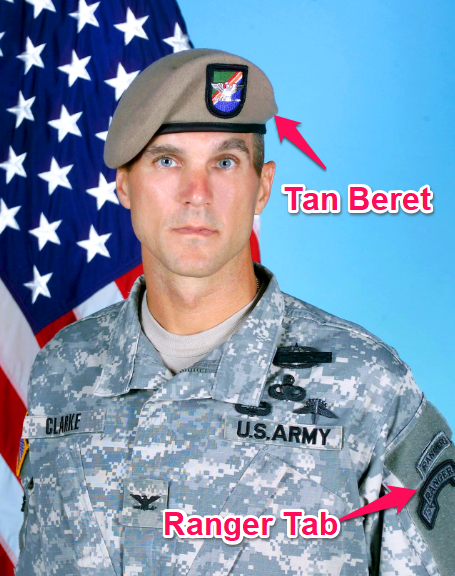
A Ranger tab denotes that a soldier has been through and passed Ranger School: a 61-day gruel-fest that is not for the faint of heart.
Differences Between Attending Ranger School And Being A Ranger
Almost any soldier can attend Ranger School, and it is understood to be valuable leadership training that a soldier thinking of making a career out of the military should consider.
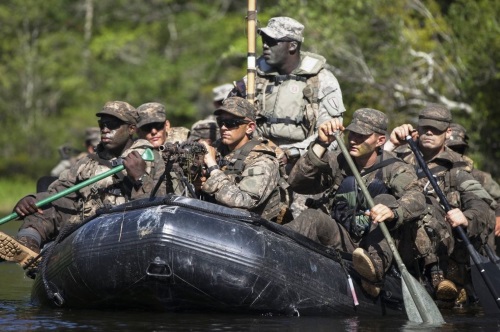
However, being a member of Ranger Battalion, the ones who wear the tan beret, is something entirely different.
Whereas regular soldiers who attend Ranger School live the Ranger life for 61 days, members of the 75th Ranger Regiment live the life 24/7/365.
Additionally, every soldier in a Ranger Battalion (aka “Ranger Batt”) goes through Ranger School, usually, once they achieve the rank of Specialist (E-4) and before they get their first leadership position.
Related Article – Army APFT Test Standards For Males and Females
What Are Green Berets?
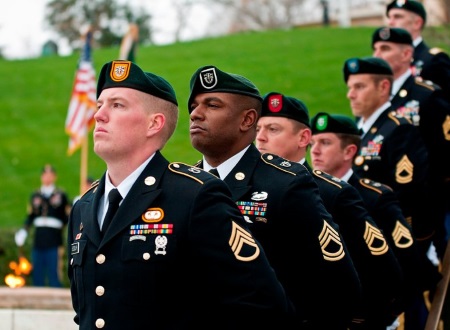
Traditionally, Green Berets are experts in unconventional warfare.
Essentially, in addition to being highly adept soldiers, they’re also going to become extremely proficient in the culture that they are assigned to operate in.
In fact, one of the longest courses that a Green Beret is required to go through is language school.
Not every SF member is going learn Arabic, Farsi, Pashtu, or Dari (the most commonly used languages where Americans operate in the Middle East today).
Related Article – Army Interpreter (09L): Career Details
Since the Green Berets operate worldwide, some groups are required to learn Spanish, Russian, Mandarin, and some African languages.
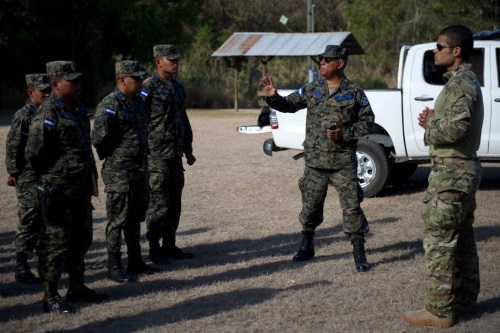
Short History Of The Green Berets
Though Special Forces can trace their roots back to the beginning of the Korean War, the unit that we recognize today as the Green Berets officially started in the early sixties and the early stages of Vietnam.
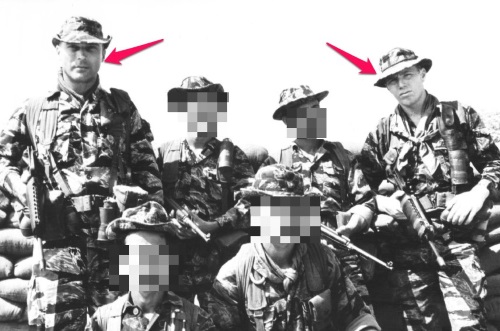
When conventional war tactics failed in the foreign jungle terrain, Green Berets stepped up.
They were the ones responsible for training the South Vietnamese in unconventional warfare (also known as guerrilla warfare).
Since Vietnam, Green Berets have fought in every known—and many unknown—conflicts the US has been involved with.
Related Article: 17 Famous Navy SEALs (and 3 Controversial Ones)
What Do Army Rangers Do?
Army Rangers are an elite light infantry unit.
They are a large-scale force that is typically involved in joint special operations raids, airborne assaults, reconnaissance missions, and search and rescue.
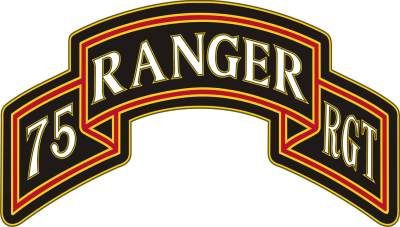
Think of them as a smaller, highly trained, and very mobile version of an Army company that is tasked to deal with specific situations.
Need an airfield quickly taken over? Call the Army Rangers.
US Government requires a communications array to be taken over and destroyed? Call the Army Rangers.
Have a power plant in enemy territory that needs to be secured? Call the Army Rangers.
What Do Green Berets Do?
Green Berets are teachers (and practitioners) of unconventional warfare.
Green Berets specialize in 5 primary missions: unconventional warfare, counterinsurgency, special reconnaissance, direct action missions, and foreign internal defense.
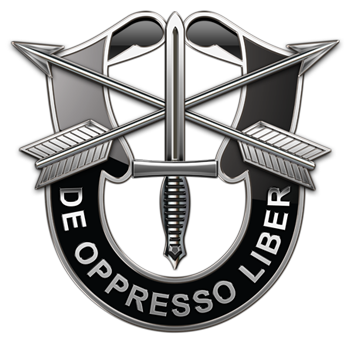
This can involve everything from supporting, training, and equipping foreign fighting services, to conducting reconnaissance deep behind enemy lines.
Need a military unit capable of counter-narcotics specialization? Call the Green Berets.
Training the indigenous peoples of a 3rd world country how to fight? Call the Green Berets.
Need to keep the peace in some worldwide hotspot? Call the Green Berets.
Related Article – Green Berets vs. Navy SEALs
Green Beret Vs. Army Ranger Selection Process
US Army Ranger Selection Process
If you’re not currently enlisted in the U.S. Army, you can sign a contract, known as Option 40, which allows you to attempt qualification for the Rangers right after Basic Training.
This puts you in the infantry MOS, and after Basic and Airborne School, you’ll go to the Ranger Assessment and Selection Program (RASP).
Compared to RASP, Army Basic Training and Airborne School will feel like summer camp.
RASP Phase 1 – Benning
RASP is eight weeks long, split into 3 phases.
Phase One, the testing phase, consists of 6 to 12-mile marches with a 47-pound pack and timed 5-mile runs.
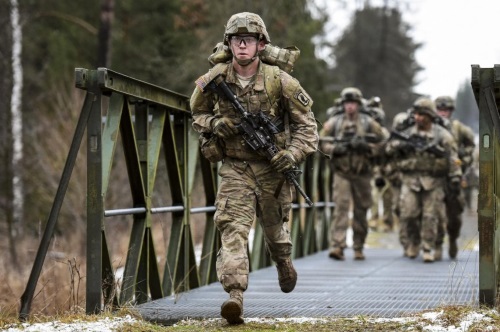
Then comes instruction on troop leadership, principles of patrolling, field craft, and basic battle drills.
To advance to the next phase, you’ll need to demonstrate that you can plan, prepare for, and execute a combat patrol as a team leader.
However, according to some, the most grueling part of phase one in RASP is the day and nighttime navigation tests.
Using only a map and compass, Ranger candidates must make their way to an objective, working sometimes as a group and other times individually.
RASP Phase 2 – Mountain
Phase Two begins the mountaineering skills training, where they receive four days of training and then test their skills by climbing and rappelling a 200-foot drop using night-vision goggles.
After mountaineering training, students receive combat training, including ambush and raid mission exercises.
Hopeful Army Rangers prove their worth by leading and moving missions across rivers and mountainous terrain while demonstrating stamina and commitment to the mission.
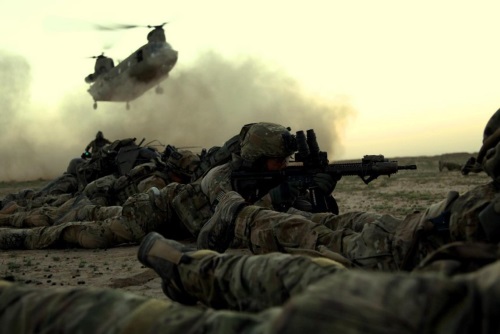
RASP Phase 3 – Swamp
The new RASP Phase 3 teaches watercraft skills in the Florida Panhandle at Eglin AFB. This phase tests the candidates’ ability to lead combat missions in a coastal swamp, using small watercraft and stealth.
To complete the final phase of the RASP program successfully, students practice leading and executing numerous combat patrols in a hot, humid, and stressful environment.
If you successfully complete RASP, you get the esteemed honor of donning a tan beret, a symbol to the world that you’re a real Army Ranger.
Army Green Beret Selection Process
Similar to how a new recruit can sign up to enter RASP right after BASIC, potential soldiers can sign an “18X” contract for consideration to enter special forces.
This contract allows a new recruit to attempt to join the Green Berets directly after completing Basic and Airborne School.
Generally, active-duty soldiers cannot apply until they’ve reached the minimum rank of E-3.
Special Forces Preparation and Conditioning (SFPC)
Those with 18X contracts with no prior military service, as well as members of the National Guard, first have to attend a 19-day pre-selection course called Special Forces Preparation and Conditioning (SFPC).
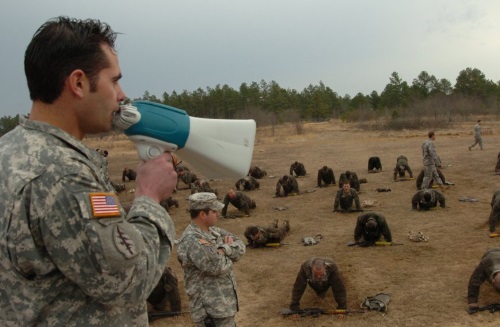
This short course consists of physical training and land navigation tests and is intended to weed out soldiers that are not prepared for the rigors of the Q Course.
Active duty soldiers take the Special Operations Preparation Course (SOPC), which is a two-week physical conditioning class to prepare them for the next phase of selection.
But passing SFPC or SOPC and getting into the Q Course doesn’t mean you’re a Green Beret.
Special Forces Assessment and Selection (SFAS)
Once the candidate has completed the appropriate conditioning course comes the Special Forces Assessment and Selection (SFAS).
This ensures they can meet the mental and physical requirements of life in the Green Berets.
This three-week process allows the Army to evaluate your “intelligence, physical fitness, motivation, trainability, judgment, and influence.”
SPECIAL FORCES QUALIFICATION COURSE (SFQC)
The Special Forces Qualification Course, colloquially known as the “Q Course,” is a one-year process.
The Q Course consists of six distinct phases and each one presents its own unique challenges.
Q Course Phase 1
Phase I is MOS (military occupational specialty) training, and it’s here that each soldier either becomes a medic, an engineer, a weapons specialist, a communications specialist, or if you’re going through the Q Course as an officer, a Special Forces Detachment Officer.
Phase I of the Q Course covers advanced training in your MOS. Those in the medical field will also be required to take the Special Operations Combat Medic (SOCM).
This phase also includes Survival, Evasion, Resistance, and Escape (SERE) training.
SERE training is probably the most infamous of all the classes.
At the end of the training, a student has to endure a five-day survival, evasion, resistance, and escape test (SERE).
The test is exactly what it sounds like: a student has to prove that he can procure food and water while alone in the wilderness.
Although you may not be an official Green Beret after SERE, if you pass, in my book you are an official badass.
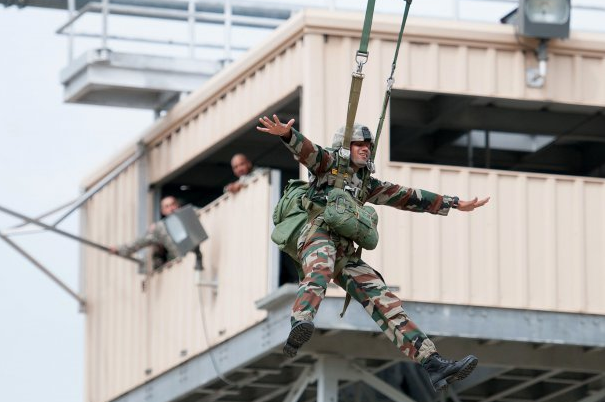
Q Course Phase 2
Phase II is 7 weeks long and involves Small Unit Tactics (SUV), marksmanship, and tactical skills.
You’ll learn urban combat operations, develop your military decision-making skills, and find out about sensitive site exploitation.
Image: Defense.gov
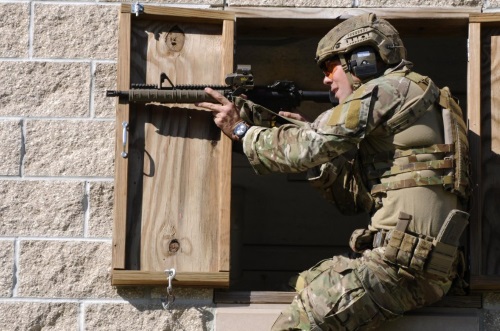
Related Article – Navy Cryptologic Technician Interpretive (CTI): Career Details
Q Course Phase 3
The third phase of the Q Course is called “Robin Sage,” named for the nearby town of Robbins, North Carolina, and for the WWII veteran colonel Jerry Sage who was one of the leading figures in teaching unconventional tactics.
Robin Sage lasts 3 weeks and teaches those non-traditional methods that made the Green Berets famous.
Phase III covers guerilla warfare, infiltration and exfiltration, negotiation, and other advanced special operations skills.
In a fictional country called “Pineland,” which covers fourteen rural counties across North Carolina, students work together to devise a plan to recruit, train, and assist faux-guerrilla soldiers in the overthrow of an oppressive regime.
Once they present their plan to their commander, students parachute into Pineland and carry out their mission.
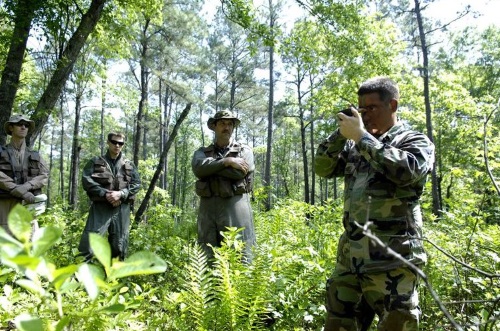
Q Course Phase 4
Phase IV of the course is graduation. At this point, individual awards are announced, and students receive their assignments and regimental indoctrination.
At the end of Phase 4, the special forces tab and green beret are awarded.
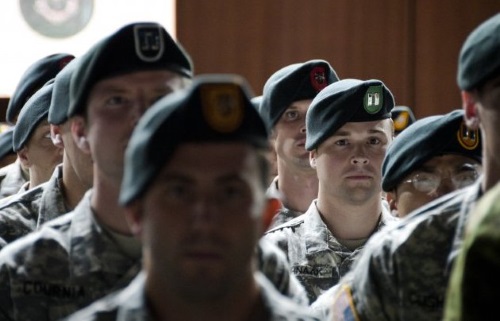
Related Article – Army MOS List: A List Of All 159 Army Jobs
Q Course Phase 5
The fifth phase involves language and culture training and lasts approximately 24 weeks.
Green Berets are expected to understand and work across the globe in many countries, and they’ll receive training in their assigned language.
Students focus on practical speech, listening, and reading as well as studying the culture. Lessons focus on social and economic systems as well as politics and regional topics.
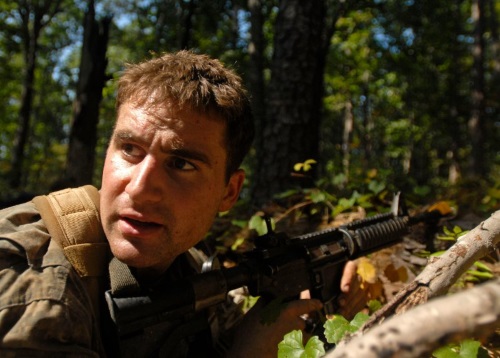
Q Course Phase 5
In Phase V, a student takes the 4-week Military Free Fall Parachutists Course, and then outprocess to their new unit.
Green Berets Vs. Army Rangers History And Notable Missions
The Green Berets were founded under Colonel Aaron Bank in June of 1952 and are thought to be inspired by unconventional warfare units like the Alamo Scouts and Philippine guerrillas.
The Green Berets have been involved in nearly every major conflict the United States has been engaged in since its inception in 1952.
Related Article – Delta Force (SFOD-D): Selection, Training, Motto, and More
Because of the nature of their operations, they are also likely involved in a wide variety of clandestine operations that go unreported to the American public.
Some of the more well-known recent engagements include:
- Operation Enduring Freedom
- The Iraq War
- War in North-West Pakistan
- Operation Inherent Resolve
- Operation Atlantic Resolve
In its current form, The Army Rangers (75th Ranger Regiment) were actually founded in February of 1984.
Prior to this time period, there were 6 Ranger battalions that all operated under the Combat Arms Regimental System.
Just like their Green Beret counterparts, the Army Rangers have been involved in a wide array of foreign conflicts since their inception.
Some of the more well-known recent engagements include:
-
- Battle of Mogadishu (aka “Black Hawk Down”)
- Kosovo War
- Operation Enduring Freedom
- Iraq War
- Operation Freedom’s Sentinel
Related Article – Green Berets vs. Delta Force
Conclusion
There you have it, these are the major differences between Green Berets and Army Rangers.
As I mentioned earlier, each of these special forces outfits is unique and important in its own right.
While the Green Berets have what many would call a harder selection, there’s no denying that the Army Rangers selection is no cakewalk, either.
In fact, many Army Rangers are plucked from the unit to serve in the Green Berets themselves.
One thing is for sure, I’m personally glad they’re on our side!
References
https://www.goarmy.com/ranger/your-questions-about-serving.html#ASVAB
See Also
- Green Berets Vs. Rangers: 5 Major Differences - June 17, 2024
- Tattoo Policy For Each Branch Of The Military In 2023 - June 17, 2024
- Top 20 Reasons To Join The Military (and 7 Reasons NOT To) - June 17, 2024

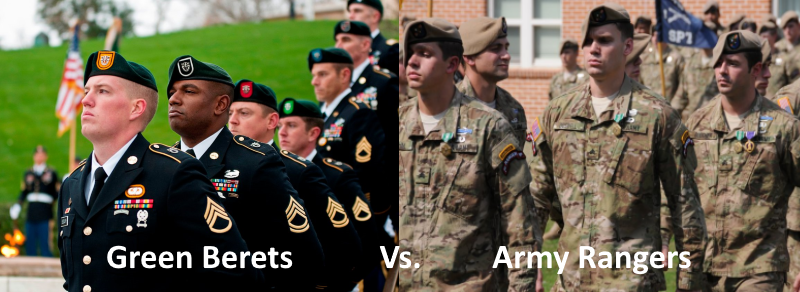

This was the most informative article about the two groups of soldiers and what differentiates the two. Thank you for your service.
96R
Glad to help Scott!
Excellent article. Side note: Green Beret are currently using Glocks.
Thanks for that Jeff, will get it changed up ASAP. Do you happen to know what model Glock they’re using? Can’t seem to find an accurate answer anywhere.
Glad you like the article!
need to correct the founding year of the Rangers, it’s not 1984. thx
Thanks for that Art, I’ve made the necessary changes.
You did a great job with the article. I was a Ranger for 7 and a half years before being selected for SF. There are things in this article that I didn’t even know…Again, great job and Happy New Year!!!
I appreciate that, and thank you for your service!
Spot on. The article was informative and accurate. When I share THAT difference with people who ask me the differences and why I wore a Ranger tab with my SF tab and call myself “SF” or “Green Beret”, I tell them much of what you refer to in your article.
Fyi: I served 28 years (26 yrs SF) and retired. Got my doctorate and mostly enjoying life.
AIRBORNE!
Dr. J. H.
Maj, USArmy ret
Excellent.
SF has its roots in the OSS and the First Special Service Force. These are WW2 organizations, not Korean War.
Good write up.